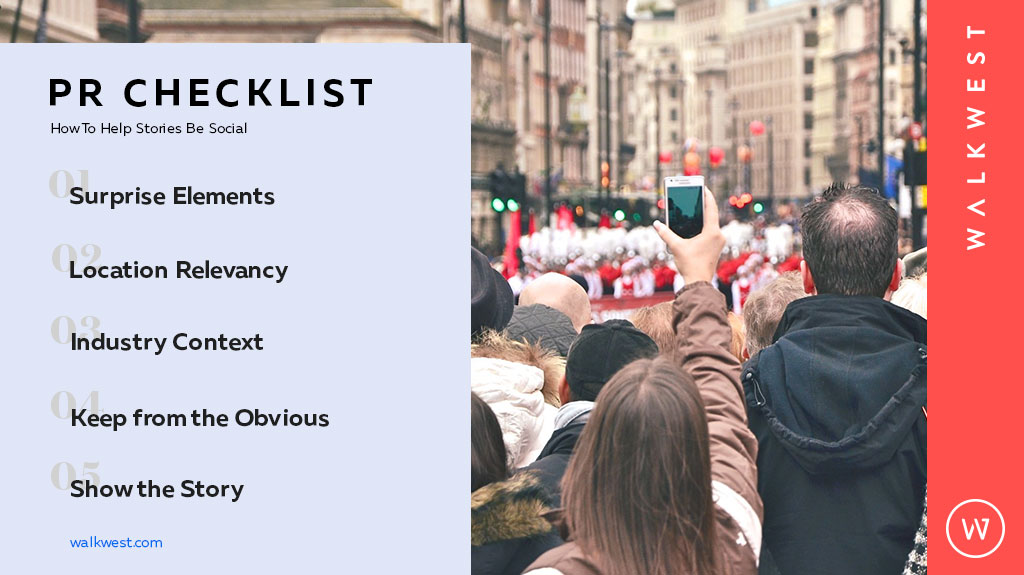Breaking news plays out on social media every day. Audiences engage with reporters across multiple social platforms. As newsrooms continue to shrink, reporters still create massive amounts of content, with fewer resources. The demands to create shareable and engaging content are factors that can impact the strategic approach to any story or news event.
In fact, a recent Cision study found that 42 percent of journalists use five or more social media platforms every week to engage with their audience. And, 67 percent of them interact with their audience daily. Moreover, journalists now have to consider opportunities for engagement when selecting story ideas or covering a breaking news event. It will not drive the story, but it is a factor that can impact content around the story.
Engaging is now part of a reporter’s job description.
To further complicate the news industry, enter influencers. Recently, marketing thought leader, Jay Baer commented that social media has driven journalists to behave more like influencers and vice versa. All told, this extensive use of social media, effort to create personal brands, and need to create shareable content should grab the attention of every public relations professional.
So, have social demands and influencer dynamics changed what makes news? And, if so, what does that mean for communicators?
We wanted to take a closer look.
Shareable Journalism
The tried and true foundation of journalism remains journalistic truth, commitment to communities, and reliable verification. But an understanding of a possible shift in approach could make the difference between being helpful to the media, or not obtaining coverage at all.
To be most effective, we as communicators need to continuously understand the needs, perspectives, and yes, time demands of our audience – including journalists.
PR done right looks a lot more like customer service, doesn’t it?
To help get a very basic temperature on this issue, I asked a few national reporter colleagues to answer the following question:
What defines news for you?
Many of them shared a predictable, “I know it when I see it,” or “It depends on a lot of things.” In reality, it’s an intuitive selection process that is part of their professional DNA.
The interesting part was the common theme from this small group of journalists who commented on the social engagement piece as being part of the distribution, rather than a deciding factor in the news value equation. So, what makes news has not changed, but the types of content related to the news has changed.
Given this digital lens through which reporters must continuously create content, I wanted to share an updated look at what journalists need to keep up with the content demands of creating news content today.
Our Walk West team uses a similar digital lens to approach our communications work for clients. To be most helpful to journalists, communicators need to help tell the story in a variety of ways.
Here is a short checklist to help you think like a reporter and remember to include story elements that will help stories be more social.

Implementing the S.L.I.K.S. checklist:
- Surprise Elements: Write pitch or news content with this top-of-mind. It’s a key ingredient for feature stories, and breaking news. For example, a sample format might share 5 things you didn’t know about reverse mortgages.
- Location Relevancy: Call-out hyperlocal aspects, personal stories from the community, and opportunities to see the local or national impact of the story.
- Industry Context: Offer industry context. Provide hashtags for larger industry topics, and to show the scope of conversation around a topic or news event.
- Keep Away from the Obvious and Dig Deeper: Like from an executive change announcement! With some PR questioning, it is likely that the real news is the international expansion this executive will lead, and its impact on the company’s growth strategy. There is simply too much content being created to go with anything obvious.
- Show the Story: Infographics, social images or short, shareable videos can be used within a story or help educate journalists about the key points of an issue.
As public relations pros, we need to think about creating shareable assets along with our news. Let’s help clients take a deeper dive to find the news value, and create story elements that help move the story forward.
Tell the story and think socially.

